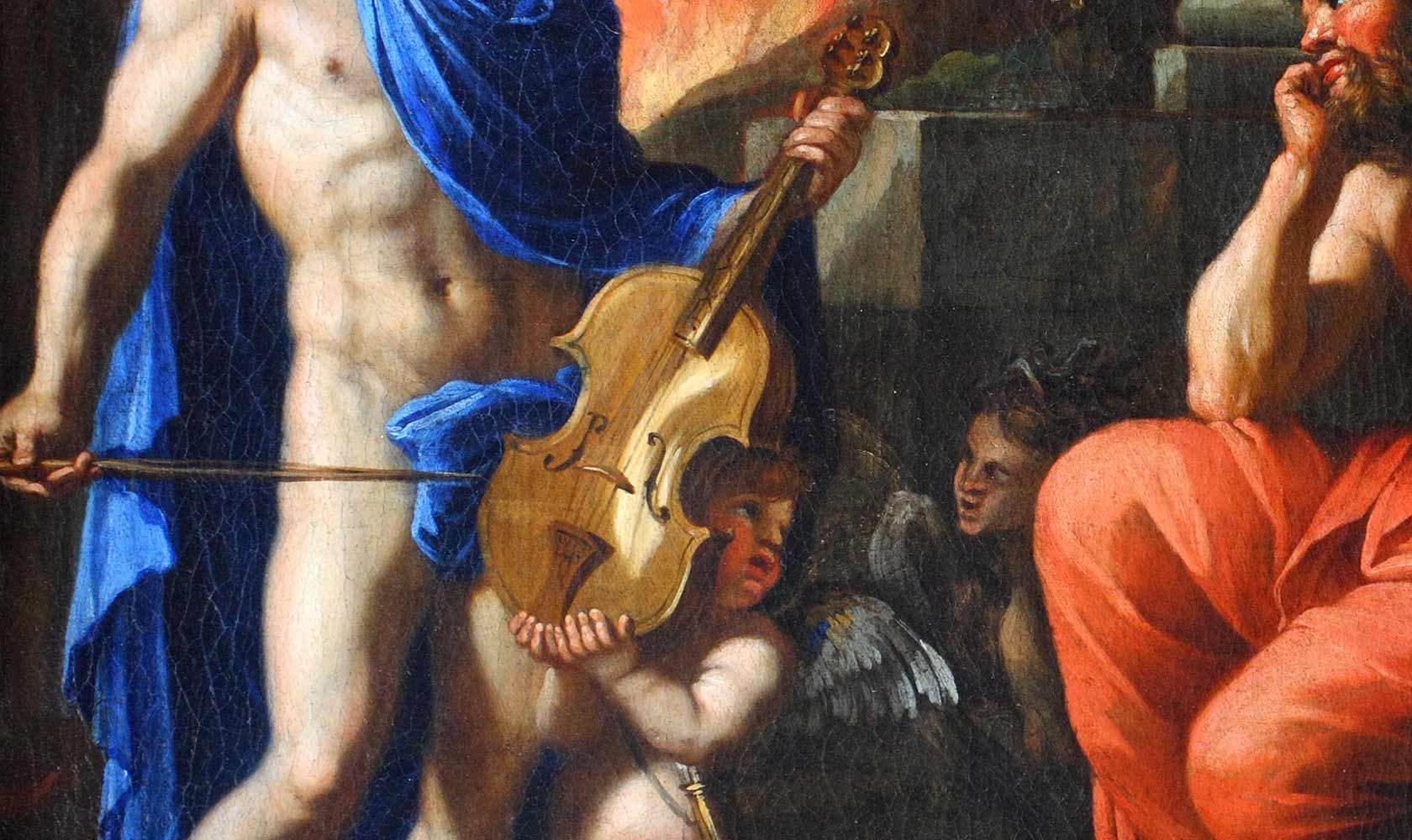Orpheus in France
The Orpheus myth in France before Charpentier
Until Charpentier’s time, the myth of Orpheus and Eurydice had never been the subject of a French opera, although around 1683, Charpentier himself had composed a small chamber cantata on the Orpheus legend. Orphée descendant aux enfers is a work for three male singers and a small chamber ensemble and has the character of a scene from an opera. Its action is restricted to Orpheus’s encounter with two shades of the Underworld: Ixion and Tantalus. Undoubtedly it served as inspiration for Act II of La Descente d’Orphée aux enfers. Approximately three years later (in late 1686 or early 1687, according to Wiley Hitchcock’s catalogue), Charpentier embarked on a full-scale operatic setting of the legend.
In their attempts to resurrect the legendary powers of music and antique drama, the earliest opera composers were drawn naturally to the myth of Orpheus. Not only is it a moving love story, but its protagonist is a legendary singer who uses the power of song to sway the hearts of the gods. The myth of Orpheus divides into three parts: the wedding of Orpheus and Eurydice, which is thwarted when the bride is bitten by a serpent; Orpheus’s journey to the Underworld, where he successfully persuades Pluto and Persephone to allow Eurydice to return¬–only to lose her when, against Pluto’s warning, he turns to see if she is following him; and the part rarely set by opera composers, Orpheus lamentation of his fate and his death at the hands of the Bacchantes.
 Unlike Italy, where the earliest surviving operas were based on the Orpheus myth, in France the same myth became the inspiration for a number of pastoral plays with machine effects and incidental music. Orpheus makes his first appearance in Nicolas de Montreux’s pastoral drama L’Arimène, ou le Berger desespere (1597), within the context of a short mythological interlude performed before the final act. The first play-length dramatization of the legend in France, however, was Charles de l’Espine’s La Descente d’Orphée aux enfers (1614), republished eight years later with the more descriptive title Le Mariage d’Orphe, sa descente aux Enfers, sa Mort par les Bacchantes. Each of the three parts of the legend is built around spectacular tableaux involving exotic settings, machine effects, and music.
Unlike Italy, where the earliest surviving operas were based on the Orpheus myth, in France the same myth became the inspiration for a number of pastoral plays with machine effects and incidental music. Orpheus makes his first appearance in Nicolas de Montreux’s pastoral drama L’Arimène, ou le Berger desespere (1597), within the context of a short mythological interlude performed before the final act. The first play-length dramatization of the legend in France, however, was Charles de l’Espine’s La Descente d’Orphée aux enfers (1614), republished eight years later with the more descriptive title Le Mariage d’Orphe, sa descente aux Enfers, sa Mort par les Bacchantes. Each of the three parts of the legend is built around spectacular tableaux involving exotic settings, machine effects, and music.
Chapoton’s tragedy La Descente d’Orphée aux enfers (1639) ushered in the golden age of the French pièce en machines. This work featured a sensational enfer scene antedating by eight years the famous one created by Giacomo Torelli for Luigi Rossi’s Orfeo (1647.) This Roman opera inspired the famed Théâtre du Marais to revive Chapoton’s play the following year with a new title La Grande journée des machines, ou le Mariage d’Orphée et d’Euridice and with added music (by Dassoucy) and machine effects (trumpeted in the libretto as ‘the most beautiful and extraordinary that the technology of centuries present and past could invent’) by the French stage designer Denis Buffequin.
Two Orpheus projects proposed for the French court came to naught. Following the successful court performances of Rossi’s Orfeo, Pierre Corneille began work on his own French adaptation of this work. According to Dubuisson-Aubenay (writing at the end of January 1648), the play of Orpheus and Eurydice, which played at the Palais-Royal this past winter with machines, was translated into French [se fait françoise] by sieur Corneille, for which he has received a 2,400 livres advance, and Torelli, conductor of the machines, between 13,000 and 14,000 livres to restore them in order. The unexpected illness of the king caused all plans to be set aside. Corneille would later introduce Orpheus as a minor character in La Toison d’or (1660), composed to celebrate the wedding of Louis XIV. Orpheus invokes Juno in song in Act I and urges on the winged Argonauts in their battle with Medea’s dragon in Act V.
A decade later, Jean Racine proposed another Orpheus project for Carnival of 1671. According to Lagrange-Chancel, Colbert solicited proposals from the leading playwrights of the day: Racine proposed the subject of Orpheus; Quinault the abduction of Persephone, which he made subsequently into one of his loveliest operas; and Molière, with the aid of the great Corneille, held out for the subject of Psyche, which was preferred over the two others.
Adapted from John Powell’s Introduction to La Descente d’Orphée aux enfers.
Background image from François Perrier, Orphée devant Pluton et Proserpine, around 1647 – 1650, Musée du Louvre, Paris

